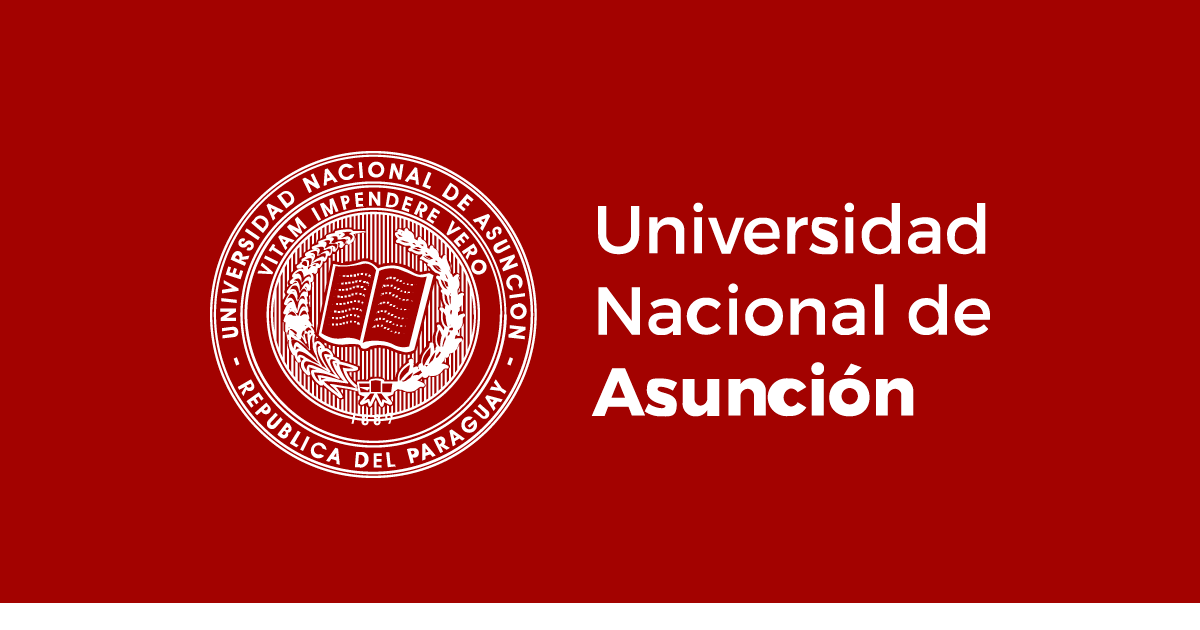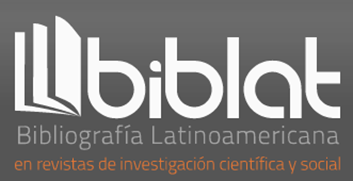Distribution and abundance of plant parasitic nematodes associated with yerba mate in Itapúa: a potential and imminent risk
DOI:
https://doi.org/10.47133/IEUNA2122bKeywords:
yerba mate, Helicotylenchus, Meloidogyne, frequency, abundance, ecological indexAbstract
Yerba mate (Ilex paraguariensis St. Hil.) has in recent years become a culturally and socially important crop for Paraguay. Moreover, it has also stood out economically, prompting an expansion of production at international levels due to increased exports. The department of Itapúa in Paraguay is responsible for 65% of the national production. Its profitability and productivity can be affected by organisms such as nematodes, but so far in Paraguay there have been no scientific reports of presence of these animals in the crop. To identify the presence of phytonematodes in the yerba mate of the department of Itapúa, soil samples were obtained from the districts of Tomás Romero Pereira and Carlos Antonio López, which were processed in the Plant Clinic of the San Carlos University, for their subsequent taxonomic gender identification and quantification. The data obtained were subjected to descriptive statistics and the analysis of ecological indices: Simpson's Dominance Index and Shannon's Diversity and Equity Index. The phytoparasitic nematodes identified were Criconemella, Helicotylenchus, Meloidogyne, Pratylenchus, Scutellonema, Tylenchorhynchus, Trichodorus, Xiphidorus and nematodes of the Tylenchida group. In addition, beneficial nematodes such as Aphelenchoides, Predators, Bacteriophages and Dorylaimida were identified. On the other hand, Helicotylenchus was the most frequent, abundant and dominant genus species in the analyzed samples, followed by Meloidogyne and Scutellonema. The nematode community of the studied localities was not very diverse and were relatively uniform. This research is the first report of nematodes associated with yerba mate crops in Paraguay and is a call to attention to reduce the potential risk that these organisms present to the production of yerba mate.
Downloads
References
Abad, P., Gouzy, J., Aury, J. M., Castagnone-Sereno, P., Danchin, E. G. J., Deleury, E., Perfus-Barbeoch, L., Anthouard, V., Artiguenave, F., Blok, V. C., Caillaud, M. C., Coutinho, P. M., Dasilva, C., De Luca, F., Deau, F., Esquibet, M., Flutre, T., Goldstone, J. V., Hamamouch, N., … Wincker, P. (2008). Genome sequence of the metazoan plant-parasitic nematode Meloidogyne incognita. Nature Biotechnology, 26(8), 909–915. https://doi.org/10.1038/nbt.1482
Almeida, T. S. & Andrade, E. P. (2010). Comunidade de nematoides em sistemas de manejo do solo. In: IIV Congresso Estadual de Iniciação Científica do IF Goiano (pp. 1-2). IIV Congresso Estadual de Iniciação Científica do IF Goiano. http://abequa.org.br/trabalhos/micropaleontologia_14.pdf
Altieri, M. A. (1995). Agroecology: the Science of Sustainable Agriculture. CRC Press. http://hdl.handle.net/10919/65594
Anaya, R. E. & Lombo, I. J. (2008). Identificación de nemátodos fitoparásitos asociados al cultivo de ñame espino (Dioscórea rotundata) en el corregimiento de Mateo Pérez - Sampués, municipio del Departamento de Sucre (Tesis de Grado, Universidad de Sucre). Repositorio Unisucre http://repositorio.unisucre.edu.co/handle/001/74
Arévalo, E. (2014). Dinámica de los indicadores de calidad del suelo en el manejo de sistemas agroforestales con cacao (Tesis Doctoral). Universidad Nacional Agraria. Repositorio Institucional. http://repositorio.lamolina.edu.pe/handle/UNALM/1758
Baermann, G. (1917) Eine einfache Methode zur Auffindung von Ankylostomum (Nematoden) larven in Erdproben. Geneeskundig Tijdschrift voor Nederlandsch Indië, 57, 137.
Bernard, G. C., Egnin, M. & Bonsi, C. (2017). The Impact of Plant-Parasitic Nematodes on Agriculture and Methods of Control. In M. Manjur Shah & M. Mahamood (Ed.), Nematology - Concepts, Diagnosis and Control (pp. 121-151). 10.5772/intechopen.68958
Bogale, M., Baniya, A. & Digennaro, P. (2020). Nematode identification techniques and recent advances. Plants, 9(10), 1–15. https://doi.org/10.3390/plants9101260
Bongers, T. & Bongers, M. (1998) Functional diversity of nematodes. Applied Soil Ecology, 10(3), 239-251. https://doi.org/10.1016/S0929-1393(98)00123-1
Burtnik, O. J. (2006). Yerba mate : Manual de producción. INTA – Agencia de Extensión Rural Santo Tomé - Corrientes, 03756, 1–52.
Campos, V. P. & Villain, L. (2005). Nematodes parasites of coffee and cocoa. In M., Luc, R.P., Sikora & Bridge, J. (Ed.), Plant Parasitic Nematodes in Subtropical and Tropical Agriculture (pp 529-580), CABI.
Campos, V. P. & Silva, J. R. C. (2008). Management of Meloidogyne spp. in coffee plantations. In R.M., Souza (Ed.), Plant-parasitic Nematodes of Coffee (pp. 149-163), Springer Science Business Media B.V.
Carvalho, J., Coimbra, J. L. & Santos, F. (2011). Diversidade de fitonematóides em áreas nativas e de agricultura no cerrado baiano. Magistra. 23(4), 262-267. https://docplayer.com.br/25958064-Diversidade-de-fitonematoides-em-areas-nativas-e-de-agricultura-no-cerrado-baiano.html
Castellón, J. (2009). Estudio de poblaciones de fitonematodos, nematodos de vida libre, hongos endofíticos y su relación con propiedades físicas y químicas del suelo en el cultivo del plátano en Rivas - Nicaragua. (Tesis de maestría, Escuela de Posgrado-CATIE). Repositorio Institucional CATIE. http://repositorio.bibliotecaorton.catie.ac.cr/handle/11554/4995
Castillo, P., Vovlas, N., Troccoli, A., Liébanas, G., Palomares Rius, J. E. & Landa, B. B. (2009). A new root-knot nematode, Meloidogyne silvestris n. sp. (nematoda: Meloidogynidae), parasitizing european holly in northern Spain. Plant Pathology, 58(3), 606–619. https://doi.org/10.1111/j.1365-3059.2008.01991.x
Coyne, D. L., Nicol, J. M. & Claudius-Cole, B. (2014). Practical plant nematology: A field and laboratory guide Integrated Pest Management.
Cubas Báez, A. P., Monges Zalazar, E.F. & Quevedo Fernández, M. L. (2018). Evaluación económica de parcelas de producción de yerba mate (Ilex paraguariensis A. St-Hil) en sistemas agroforestales en el departamento de Itapúa, Paraguay. [Presentación en Jornada]. XXVI Jornadas de Jóvenes Investigadores AUGM. https://bdigital.uncu.edu.ar/fichas.php?idobjeto=13297
Derouard, L. & Lavelle, P. (1994). Variation de la macrofaune du sol au cours des différentes étapes de la jachère dans les systèmes agricoles au Sénégal. In C., Floret (Ed.), Raccourcissement du temps de jachère, biodiversité et développement durable en Afrique Centrale (Cameroun) et en Afrique de l’Ouest (Sénégal, Mali).(pp. 47-60). Commission des Communautés Européennes.
Dinardo-miranda, L. L. (2005). Nematóides e pragas de solo em cana-de-açúcar. Encarte do Informações Agronômicas, 110, 25–32.
Edwards, C. A. & Lofty, J. R. (1969). The influence of agricultural practice on soil micro-arthropod populations. In L.G., Sheals (Ed.), The Soil Ecosystem (pp. 234-247). Systematics Association.
Ekschmitt, K., Bakonyi, G., Bongers, M., Bongers, T., Boström, S., Dogan, H., Harrison, A., Nagy, P., O’Donnell, A. G., Papatheodorou, E. M., Sohlenius, B., Stamou, G. P. & Wolters, V. (2001). Nematode community structure as indicator of soil functioning in European grassland soils. European Journal of Soil Biology, 37(4), 263–268. https://doi.org/10.1016/S1164-5563(01)01095-0
Enciso, V. (2019). Compendio gráfico de exportaciones agroalimentarias del Paraguay. FCA-UNA. http://www.agr.una.py/ecorural/otras_publicaciones/compendio_grafico_exportaciones.pdf
Eno, C. F. & Blue, W. G. (1954). The effect of anhydrous ammonia on nitrification and the microbiological population in sandy soils. Soil Science Society of America Proceedings, 18, 178–181.
Fernández, M. & Ortega, J. (1982). Comportamiento de las poblaciones de nematodos fitoparásitos en plátano enano Cavendish. Ciencias de la Agricultura. 13, 7-17.
Ferreira, R. V., Otoboni, C. E. de M., Cruz, M. C. & Goulart, S. L. (2007). Ocorrência de nematóides Nas culturas da aceroleira , goiabeira e pessegueiro. Revista Cientifica Eletrônica de Agronomia, 7(12), 1-7. http://faef.revista.inf.br/imagens_arquivos/arquivos_destaque/ceeoXgTr3L2dT3F_2013-5-3-15-1-43.pdf
Figueira, A. F., Berbara, R. L. L. & Pimentel, J. P. (2011). estrutura da população de nematoides do solo em uma unidade de produção agroecológica no Estado do Rio de Janeiro, Brasil. Acta Scientiarum - Agronomy, 33(2), 223–229. https://doi.org/10.4025/actasciagron.v33i2.4716
Goulart, A. M. (2007). Diversidade de nematóides em agroecossistemas e ecossistemas naturais. Embrapa Cerrados, Documentos, 191(1), 1-71. https://www.infoteca.cnptia.embrapa.br/bitstream/doc/571966/1/doc191.pdf
Grigoletti Junior, A. & Auer, C. G. (1996). Doenças da erva-mate: identificação e controle. Embrapa-CNPF, Circular técnica, 25, 18. http://ainfo.cnptia.embrapa.br/digital/bitstream/item/16966/1/circ-tec25.pdf
Grigoletti Junior, A., Auer, C. G. & Iede, E. T. (2000). Manual de identificação de pragas e doenças da erva-mate (Ilex paraguariensis) St. Hil. Embrapa Florestas, Documentos, 44, 1-23. http://ainfo.cnptia.embrapa.br/digital/bitstream/item/160800/1/Doc-44.pdf
Horst, R. K. (2013). Field manual of diseases on trees and shrubs. Springer. https://doi.org/10.5860/choice.51-1234
Huang, S. P. & Cares, J. E. (2006). Nematode communities in soils under different land use systems in Brazilian Amazon and Savannah vegetation. In: F. M. S., Moreira, J. O., Siqueira & L., Brussaard (Ed.). Soil biodiversity in Amazonian and other Brazilian ecosystems. (pp. 163 -183). 10.1079/9781845930325.0163
IICA, COSAVE & PHSAIC. (2019). Metodologia de avaliação de impacto socioeconômico de medidas fitossanitárias e Guia de aplicação. IICA. https://repositorio.iica.int/bitstream/handle/11324/7908/BVE19040211p.pdf?sequence=3&isAllowed=y
Jenkins, W. R. (1964). A rapid centrifugal-flotation technique for separating nematodes from soil. Plant Disease Reporter, 48(9), 692. https://www.cabdirect.org/cabdirect/abstract/19650801105
Jones, J. T., Haegeman, A., Danchin, E. G. J., Gaur, H. S., Helder, J., Jones, M. G. K., Kikuchi, T., Manzanilla-López, R., Palomares-Rius, J. E., Wesemael, W. M. L. & Perry, R. N. (2013). Top 10 plant-parasitic nematodes in molecular plant pathology. Molecular Plant Pathology, 14(9), 946–961. https://doi.org/10.1111/mpp.12057
Kandji, S. T., Ogol, C. K. P. O. & Albrecht, A. (2001). Diversity of plant-parasitic nematodes and their relationships with some soil physico-chemical characteristics in improved fallows in western Kenya. Applied Soil Ecology, 18(2), 143–157. https://doi.org/10.1016/S0929-1393(01)00157-3
Khan, Z. & Kim, Y. H. (2007). A review on the role of predatory soil nematodes in the biological control of plant parasitic nematodes. Applied Soil Ecology, 35(2), 370–379. https://doi.org/10.1016/j.apsoil.2006.07.007
Kimenju, J. W., Odero, G. O. M., Mutitu, E. W., Wachira, P. M., Narla, R. D. & Muiru, W. M. (2009). Suitability of locally available substrates for Oyster Mushroom (Pleurotus ostreatus) cultivation in Kenya. Asian Journal of Plant Sciences, 8(7), 510–514. https://doi.org/10.3923/ajps.2009.510.514
Kirsch, V. G., Kulczynski, S. M., Gomes, C. B., Bisognin, A., Gabriel, M., Bellé, C. & Lima-Medina, I. (2016). Helicotylenchus Associadas À Soja No Rio Grande Do Sul. Nematropica, 46(2), 197–208. https://journals.flvc.org/nematropica/article/view/90812
Lozano, L. A. & Santos, B. dos. (1991). Ocorrência de nematoides do gênero Meloidogyne em mudas de erva-mate no estado do Paraná. Revista de Agricultura, 66(2), 203-205. https://www.revistadeagricultura.org.br/index.php/revistadeagricultura/article/view/903
Luc, M., Sikora, R. & Bridge, J. (2005). Plant Parasitic nematodes in subtropical and tropical agriculture. CABI. https://www.researchgate.net/publication/236985095_Plant_Parasitic_Nematodes_in_Subtropical_and_Tropical_Agriculture_2nd_Edition
Maciel, A., Villalba, J., Benítez, M. & Vera, M. R. (2020). Síntesis Estadísticas: Año Agrícola 2019/2020. Dirección de Censos y Estadísticas Agropecuarias [DCEA]-Ministerio de Agricultura y Ganadería [MAG]. 1-50.
Magurran, A. E. (2004). Measuring biological diversity. Blackwell. http://www.bio-nica.info/Biblioteca/Magurran2004MeasuringBiological.pdf
Meneses, A., Pocasangre, L. E., Somarriba, E., Riveros, A. S. & Rosales, F. E. (2003). Diversidad de hongos endofíticos y abundancia de nemátodos en plantaciones de banano y plátano de la parte baja de los territorios indígenas de Talamanca. Agroforestería de las Américas, 10(37-38), 59–62. http://hdl.handle.net/11554/6077
Mesa-Valle, C. M., Garrido-Cardenas, J. A., Cebrian-Carmona, J., Talavera, M. & Manzano-Agugliaro, F. (2020). Global Research on Plant Nematodes. Agronomy, 10(8), 1148. https://doi.org/10.3390/agronomy10081148
Neher, D. A. (1999). Nematode communities in organically and conventionally managed agricultural soils. Journal of Nematology, 31(2), 142–154. https://www.ncbi.nlm.nih.gov/pmc/articles/PMC2620368/
Neher, D. A. & Darby, B. J. (2009). General community indices that can be used for analysis of nematode assemblages. In M.J., Wilson, & T., Kakouli-Duarte (Ed.), Nematodes as environmental indicators (pp. 107-123). CAB International. https://www.researchgate.net/profile/Deborah-Neher/publication/250612802_General_community_indices_that_can_be_used_for_analysis_of_nematode_assemblages/links/0c96051ec373c27c33000000/General-community-indices-that-can-be-used-for-analysis-of-nematode-assemblages.pdf
Neher, D. A., Nishanthan, T., Grabau, Z. J. & Chen, S. Y. (2019). Crop rotation and tillage affect nematode communities more than biocides in monoculture soybean. Applied Soil Ecology, 140(1), 89–97. https://doi.org/10.1016/j.apsoil.2019.03.016
Neves, W. S., Dias, M. S. C. & Barbosa, J. G. (2009). Flutuação populacional de nematoides em bananais de Minas Gerais e Bahia (anos 2003 a 2008). Nematologia Brasileira, 33(4), 281–285.
Norton, D. C. (1978). Ecology of Plant-parasitic Nematodes. Wiley Interscience.
Oliveira, Y. M. de. & Rotta, E. (1985). Área de distribuição natural de erva-mate (Ilex paraguariensis St. Hil.). Embrapa CNPF, 15, 17-36. http://ainfo.cnptia.embrapa.br/digital/bitstream/item/102798/1/AreaDistribuicao.pdf
Ovando, C. E. (2014). Biodiversidad de comunidades de nematodos asociados a café (Coffea arabica L.), diagnóstico y servicios desarrollados en Finca las Nubes, San Francisco Zapotitlán, Suchitepéquez, Guatemala, C.A. (Tesis de grado, Universidad San Carlos de Guatemala). Repositorio USAC. http://www.repositorio.usac.edu.gt/2753/
Palomares-Rius, J. E., Castillo, P., Montes-Borrego, M., Müller, H. & Landa, B. B. (2012). Nematode community populations in the rhizosphere of cultivated olive differs according to the plant genotype. Soil Biology and Biochemistry, 45(1), 168–171. https://doi.org/10.1016/j.soilbio.2011.11.009
Paoletti, M. G., Favretto, M. R., Marchiorato, A., Bressan, M. & Babetto, M. M. (1993). Biodiversità in pescheti forlivesi. En M.G., Paoletti (Ed.), Biodiversità negli Agroecosistemi (pp. 20–56). Osservatorio Agroambientale.
Peraza, W. (2010). Nematofauna asociada al cultivo de café (Coffea arabica) y orgánico y convencional en Aserrí, Costa Rica. Ingenierías & Amazonia, 3(2), 105–112. https://www.uniamazonia.edu.co/revistas/index.php/ingenierias-y-amazonia/article/view/74/0
Ramos, R., Kaspary, T. E., Balardin, R. R., Nora, D. D., Antonioli, Z. I. & Bellé, C. (2019). Plantas daninhas como hospedeiras dos nematoides-das-galhas. Revista Agronomia Brasileira, 3(3), 1-3. https://doi.org/10.29372/rab201906
Ritzinger, C. H., Fancelli, M. & Ritzinger, R. (2010). Nematoides: Bioindicadores de sustentabilidade e mudanças edafoclimáticas. Revista Brasileira de Fruticultura, 32(4), 1289–1296. https://doi.org/10.1590/S0100-29452010000400045
Rivera, M. J., Rodriguez-Saona, C., Jennings, D. E. & Koppenhöfer, A. M. (2015). Assessing the impact of cultivation and plant domestication of highbush blueberry (Vaccinium corymbosum) on soil properties and associated plant-parasitic nematode communities. Soil Biology and Biochemistry, 88, 25–28. https://doi.org/10.1016/j.soilbio.2015.05.010
Rocha, M., Nunes, H. & Sardeiro, S. (2019). Quantificação e Distribuição espacial de fitonematóides em uma área hortícola no Oeste da Bahia. Magistra, 30(1), 406-412. https://magistraonline.ufrb.edu.br/index.php/magistra/article/view/698
Santiago, D. C., Krzyzanowski, A. A. & Homechin, M. (2000). Behavior of Ilex paraguariensis St. Hilaire, 1822 to Meloidogyne incognita and M. paranaensis and their influence on development of plantlets. Brazilian Archives of Biology and Technology, 43(2), 139–142. https://doi.org/10.1590/S1516-89132000000200001
Semensatto Junior, D.L. (2003). Aplicação de índices de diversidade em estudos envolvendo associações entre foraminíferos e tecamebas recentes: uma breve discussão. Em: Anais do IX Congresso da associação brasileira de estudos do quaternário (pp. 1-5). IX Congresso da associação brasileira de estudos do quaternário. http://abequa.org.br/trabalhos/micropaleontologia_14.pdf
Shannon, C. E. & Weaver, W. (1963). The mathematical theory of information. Urbana. https://monoskop.org/images/b/be/Shannon_Claude_E_Weaver_Warren_The_Mathematical_Theory_of_Communication_1963.pdf
Simpson, E. H. (1949). Measurements of diversity. Nature, 163, 688. https://doi.org/10.1038/163688a0
Suárez, Z., & Rosales, L. (2004). Problemas nematológicos en musáceas. Revista Digital CENIAP HOY, 6. http://www.ceniap.gov.ve/ceniaphoy3/articulos/n6/arti/ suarez_z/arti/suarez_z.htm
Tomazini, M. D., Ferraz, L. C. C. B. & Monteiro, A. R. (2008). Abundância e diversidade de nematóides em área contíguas de vegetação natural e submetidas a diferentes tipos de uso agrícola. Nematologia Brasileira, 32(3), 185–193. https://www.researchgate.net/publication/242424289_Abundancia_e_Diversidade_de_Nematoides_em_Areas_Contiguas_de_Vegetacao_Natural_e_Submetidas_a_Diferentes_Tipos_de_Uso_Agricola
Umesh, K. C., Ferris, H. & Bayer, D. E. (1994). Competition between the plant-parasitic nematodes Pratylenchus neglectus and Meloidogyne chitwoodi. Journal of Nematology, 26(3), 286–295. https://www.ncbi.nlm.nih.gov/pmc/articles/PMC2619500/
Uramoto, K., Walder, J. M. M. & Zucchi, R. A. (2005). Análise quantitativa e distribuição de populações de espécies de Anastrepha (Diptera: Tephritidae) no campus Luiz de Queiroz, Piracicaba, SP. Neotropical Entomology, 34(1), 33-39. https://doi.org/10.1590/S1519-566X2005000100005
Wardle, D. A. & Yeates, G. W. (1993). The dual importance of competition and predation as regulatory forces in terrestrial ecosystems: evidence from decomposer food-webs. Oecologia, 93(2), 303–306. https://doi.org/10.1007/BF00317685
Downloads
Published
How to Cite
Issue
Section
License
Copyright (c) 2021 Gabriela Caballero-Mairesse, Gloria Resquin-Romero, Fernando Lugo, Alejandro Gini, Lucas Alcazar, Dilma Cano, Horacio López-Nicora

This work is licensed under a Creative Commons Attribution 4.0 International License.

















